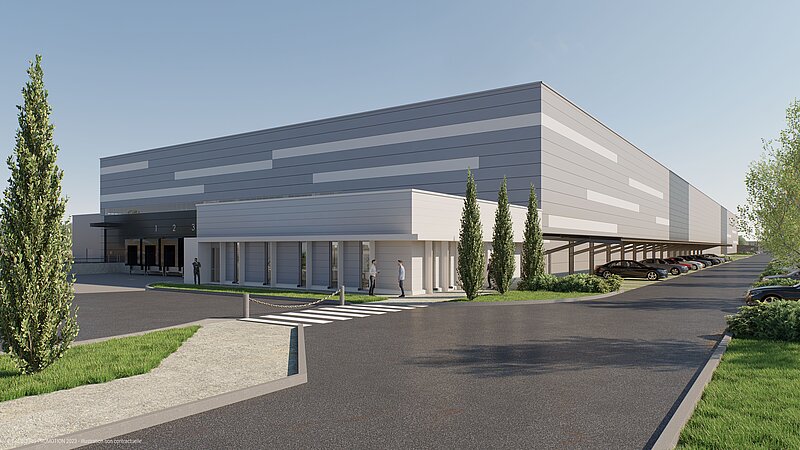
Greening Warehouses: Sustainable Developments for the Future
The logistics and warehousing industry is undergoing a significant transformation with a focus on sustainability. Sustainable warehouse developments are becoming increasingly crucial in minimizing environmental impact, improving efficiency, and meeting the growing demand for eco-friendly practices. In this article, we delve into the key aspects of sustainable warehouse developments that are shaping the future of logistics.
Energy-Efficient Building Design
At the core of sustainable warehouse developments is the emphasis on energy-efficient building design. This involves the use of eco-friendly materials, advanced insulation, and energy-efficient lighting systems. By optimizing the building’s design, warehouses can reduce energy consumption, lower operational costs, and minimize their carbon footprint. Energy-efficient structures contribute to a greener and more sustainable logistics infrastructure.
Renewable Energy Integration
Sustainable warehouses prioritize the integration of renewable energy sources to power their operations. Solar panels, wind turbines, and other renewable energy solutions are increasingly being incorporated into warehouse designs. Harnessing clean energy not only reduces dependence on traditional power sources but also provides a renewable and sustainable energy supply for day-to-day operations.
Smart Technologies for Resource Optimization
The adoption of smart technologies plays a pivotal role in sustainable warehouse developments. Automated systems, sensors, and data analytics enable efficient resource optimization. Smart technologies help monitor energy usage, track inventory levels, and streamline operations, leading to reduced waste and improved overall efficiency. This technological integration contributes to a more sustainable and intelligent warehouse ecosystem.
Green Roof and Rainwater Harvesting
Green roofs, adorned with vegetation, and rainwater harvesting systems are sustainable features gaining prominence in warehouse developments. Green roofs provide insulation, reduce heat absorption, and contribute to improved air quality. Rainwater harvesting systems collect and store rainwater for various non-potable uses within the warehouse, conserving water resources and promoting eco-friendly practices.
Waste Reduction and Recycling Initiatives
Sustainable warehouses prioritize waste reduction and recycling initiatives to minimize their environmental impact. Implementing efficient waste management systems, recycling programs, and promoting the use of recyclable materials contribute to a circular economy within the logistics sector. These initiatives help warehouses reduce landfill waste and promote responsible resource management.
Ninth World Hub: Showcasing Sustainable Logistics Solutions
Explore the forefront of sustainable warehouse developments at Ninth World Hub. As a hub committed to showcasing innovative logistics solutions, Ninth World Hub exemplifies how sustainable practices can be seamlessly integrated into warehouse operations, setting a standard for the industry.
Green Transportation and Last-Mile Solutions
Sustainable warehouse developments extend their focus to green transportation and last-mile delivery solutions. Adopting electric or hybrid vehicles, optimizing delivery routes, and exploring alternative last-mile delivery options contribute to reducing the carbon footprint associated with logistics operations. These initiatives align with the broader goal of creating a more sustainable supply chain.
Certifications and Compliance with Standards
Achieving certifications such as LEED (Leadership in Energy and Environmental Design) and compliance with sustainability standards are essential for sustainable warehouses. These certifications validate the commitment to environmentally responsible practices and ensure adherence to established sustainability benchmarks. Meeting these standards reflects a dedication to creating warehouses that are both efficient and environmentally friendly.
Employee Well-Being and Sustainable Practices
Sustainable warehouse developments prioritize employee well-being by incorporating green spaces, natural light, and eco-friendly amenities. Creating a sustainable work environment enhances employee satisfaction, productivity, and overall quality of life. Employee well-being is an integral part of the sustainability equation, acknowledging the interconnectedness of environmental and human factors.
Continuous Innovation for a Greener Future
In conclusion, sustainable warehouse developments are at the forefront of creating a greener and more eco-friendly logistics landscape. From energy-efficient designs to renewable energy integration, waste reduction initiatives, and employee well-being, these sustainable practices are reshaping the future of warehouse operations. Explore the continuous innovation in sustainable logistics at Ninth World Hub and witness the transformation towards a more environmentally conscious and efficient warehouse industry.
